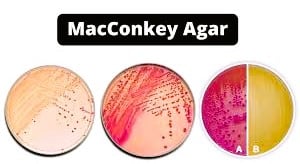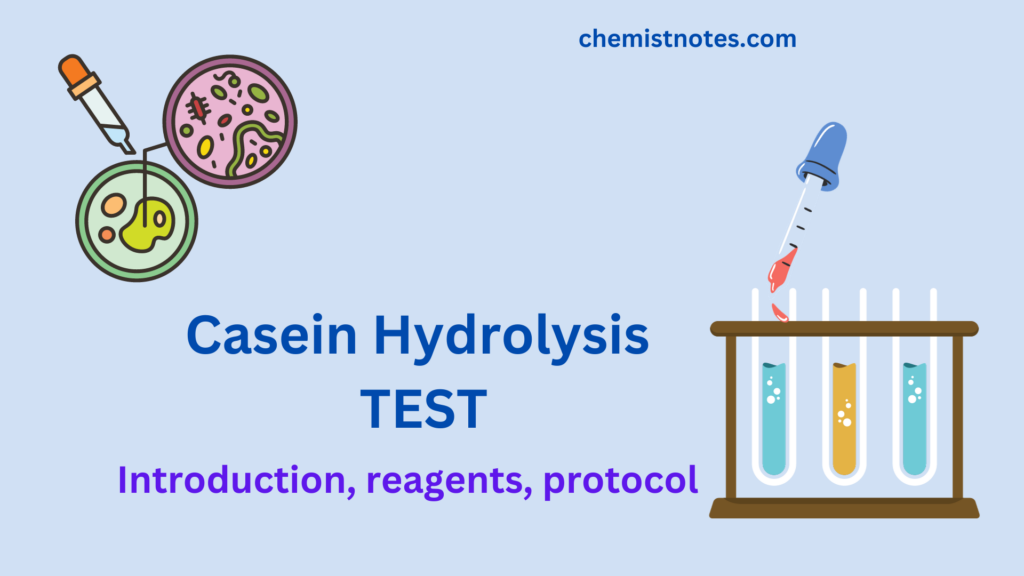Table of Contents
ToggleMacConkey Agar are selective and differentiated types of agar for the selected bacterial cultures. It is intended to separate Gram-negative and enteric (often found in the intestinal system) bacteria based on the fermentation of lactose. They are generally specific for the separation of gram Negative bacteria. This media has differential and selective properties. Bile salts and the dye crystal violet, which stop the growth of Gram-positive bacteria, are the selective components. Lactose is the differentiating component.

What is MacConkey Agar ?
MacConkey Agar is used to isolates Gram-negative enteric bacteria , and lactose fermenting and non-fermenting gram-negative bacteria are distinguished from one another. Additionally, it has become normal practice to categorize bacteria in the media based on their capacity to ferment carbohydrates other than lactose.
Principle of MacConkey Agar
The osmotic equilibrium of the medium is kept in check by sodium chloride. Lactose-fermenting strains develop a reddish or pink color. The red color results from neutral red being absorbed, lactose producing acid, and the dye changing color when the medium’s pH drops below 6.8.
Composition of macConkey agar
The composition for the this agar are explained in the below table.
| Ingredients | Amount (g) |
| Sodium chloride | 5 |
| Agar | 13.5 |
| Neutral red | 0.03 |
| Crystal violet | 0.001 |
Recipe of MacConkey agar
The procedure for the preparation of MacConkey agar is :
- 49.53 grams of the dehydrated medium is dissolved in 1000 cc of distilled or filtered water.
- To completely dissolve the medium, heating is required until it boils.
- A validated cycle is used to sterilize by autoclaving for 15 minutes at 121°C and 15 lbs of pressure.
- to 45–50 °C.
- It is poured into sterilized Petri plates after thoroughly blending.
- Depart to dry.
Reliable Application
The application of this agar are :
- As a selective, differentiating, and indicator medium for the isolation of gram-negative bacilli, including coliform organisms and enteric pathogens, MacConkey Agar is advised for usage.
- It is used to distinguish gram-negative bacteria that digest lactose from those that do not.
- It is used to separate intestinal pathogens and coliforms from clinical specimens, food samples, and water samples.
Limitations
The limitation of this agar are:
- Colony characteristics only serve as a first form of identification, thus pure culture colonies must be tested for definitive identification using biochemical, immunological, molecular, or mass spectrometry methods.
- Compared to other enteric plating media, MacConkey Agar has a relatively low proportion of bile salts. To improve the likelihood of pathogen isolation, it is advised to simultaneously utilize more selective media for gram-negative enterics, such as Hektoen enteric agar (HEK, HE, or HEA) or Xylose lysine deoxycholate (XLD) agar.
- It’s possible to come across strains of the organism that don’t grow well or don’t grow at all on this medium.
What color is Staphylococcus aureus on MacConkey Agar?
Staphylococcus and Enterococcus can develop since crystal violet is absent. On top of or below the medium’s surface, enterococci generate compact, small red colonies, while staphylococci produce pale pink to red colonies.
References
https://www.uwyo.edu/molb2021/additional_info/summ_biochem/macconkey.html






